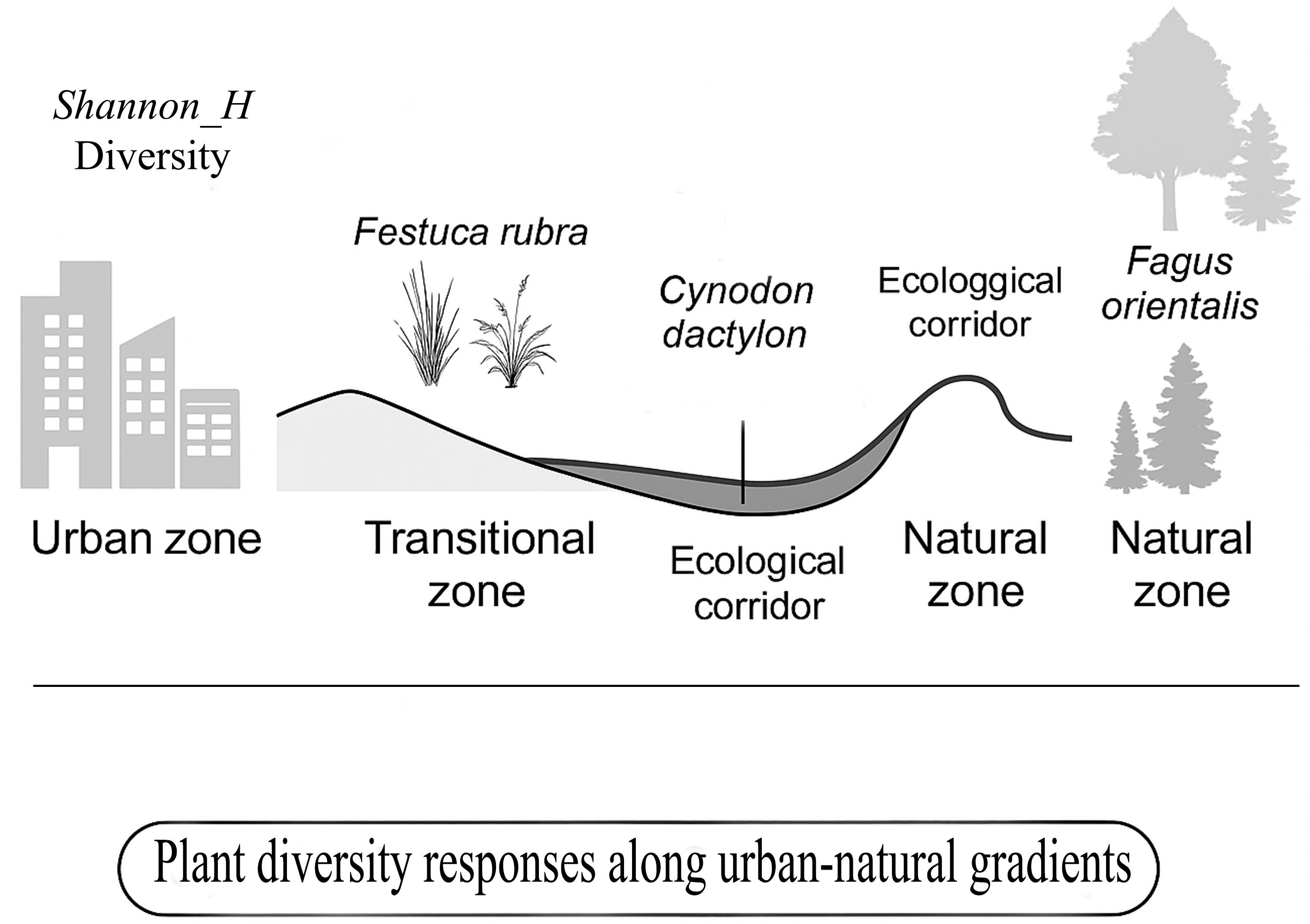
Urbanization substantially restructures landscape composition, yet fine-scale patterns of vascular plant diversity along urban–natural gradients remain insufficiently examined, particularly in ecologically heterogeneous, rapidly transforming Anatolian cities. This study explores floristic diversity across an urban–rural continuum in Düzce, a mid-sized city in the Western Black Sea region of Turkey, using a stratified design encompassing 397 vegetation plots across five ecologically informed transects. Each transect captured distinct land-use and topographic transitions—including forest interfaces, industrial zones, major roads, elevational shifts, and riparian corridors. Shannon diversity (H′) analyses revealed consistent declines in transitional areas, in contrast to elevated and stable diversity in forests, riparian margins, and steep slopes. Unexpectedly high diversity was also recorded in select urban sites, influenced by habitat mosaics and microclimatic variability. Species composition was dominated by disturbance-tolerant, cosmopolitan taxa such as Festuca rubra, Cynodon dactylon, and Agrostis stolonifera, reflecting strong ecological filtering across the urban matrix. Additionally, the persistent occurrence of native trees such as Tilia tomentosa across both urban and natural zones suggests the functional adaptability of certain mesophytic species to diverse urban contexts, while Fagus orientalis remained confined to interior forest sections, indicating sensitivity to fragmentation and disturbance.
Total file downloads: 14